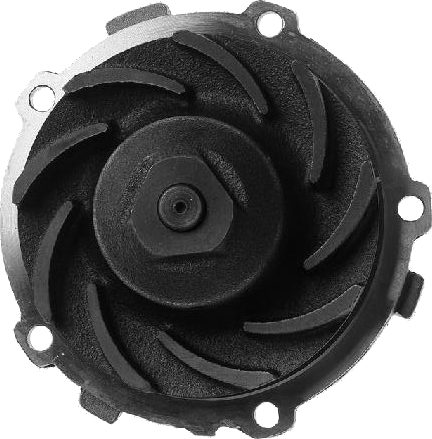
The water pump moves the coolant through the engine and radiator, which transfers engine heat to the air where it can escape through various openings in the vehicle. The pump is typically powered via the serpentine belt from the engine's rotational energy, and sometimes from the timing belt/chain. Most automotive water pumps use a fan design to push water from the center of the pump to outlets on the outside.
The water pump's power is based on the blade design and the size of the pulley that the engine is turning. In addition, the coolant flow is regulated by a thermostat.
Water pumps are lubricated by coolant, which is one of the reasons why running pure water in the cooling system isn't recommended. Some naturally leak (slowly) over time, as the coolant seeps through the bearing surface.
Reverse Rotation Pumps
Although many automotive engines only have one type of pump that will work and fit for the design, some more popular engines have seen many different accessory layouts (placement of the alternator, AC compressor, various pulleys, and other components) which routes the serpentine belt differently. Sometimes, this leads to a set-up where the belt turns the water pump pulley in the opposite direction, which means the pump fan blades need to face the opposite direction as well. One way to tell if the pump turns in the opposite direction as the original pump is if it has a different type of pulley on it; if the original is grooved and the new one has a smooth pulley, the fan blades will be pointed in the other direction, and the new pulley will not work on your engine. Reverse rotation pumps are never found on systems where the water pump is driven by the timing belt/chain.
- Antifreeze/Coolant
- Serpentine Belt
- Thermostat
- Radiator
